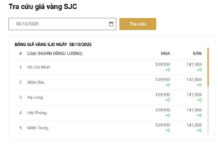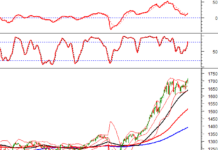In the vibrant landscape of the Mid-Autumn festival, Cái Lò Nướng stands out as a quintessential example of how a local culinary brand can thrive through a consistent strategy: prioritizing the use of Vietnamese agricultural produce, continuously innovating flavors, and trend-leading designs.
Vietnamese Agricultural Produce as the “Soul” of the Products
The foundation for Cái Lò Nướng’s sustained growth lies in its consistent quality over the years. The brand prioritizes the selection of fresh fruits from various regions across the country, which are then transformed by skilled artisans into harmonious creations that delight both the eyes and the palate.
Cái Lò Nướng places Vietnamese agricultural produce at the heart of its creations, featuring soursop from the Mekong Delta, lotus seeds from Dong Thap and Ho Tay, crisp and juicy star fruit from Quang Nam and Vinh Long, and the fragrant lychees of Luc Ngan and Thanh Ha. As a result, each cake not only delights the taste buds but also captures the essence of the season and the region, enhancing the value of local produce.

This year’s highlight is the white bean-based dough, a formula over a year in the making, resulting in soft, fragrant cakes that hold their shape beautifully during intricate molding.
The cakes featuring soursop and lotus seeds, star fruit and cinnamon with dried tangerine peel and subtle hints of osmanthus, lychee and lotus, and mango and lotus with a touch of mango create a lasting impression. The star fruit cake boasts a golden crust, complemented by dried tangerine peel and a subtle hint of osmanthus. The lychee and rose cake from Dalat exudes both romance and purity. The soursop cake has a vibrant green shell, enveloping the aromatic and nutty lotus seed filling. The mango cake is pleasantly sweet, while the coconut milk and coffee cake captivates with the allure of the Central Highlands.
“Natural ingredients can be challenging to work with as they tend to lose their flavor during the various processing stages. Hence, our artisans must be meticulous and cautious throughout the production process. We also prioritize the use of Vietnamese agricultural produce, supporting the longevity of our country’s farms, fields, and lotus ponds,” shared a brand representative.
Innovative and Daring Flavors
This year, Cái Lò Nướng elevates the Mid-Autumn festival experience with a luxurious twist on traditional savory cakes, featuring the esteemed truffle mushroom—a prized ingredient in European cuisine. The classic baked cake exterior has been refined over the years to achieve a smooth texture and a lustrous brown hue. The handmade filling, a harmonious blend of four types of mushrooms, including the esteemed truffle, along with jam and nuts, strikes a perfect balance between salty and sweet, exuding a delicate aroma.
Additionally, the brand introduces bold and innovative flavors such as Beef in Black Pepper Sauce, Salmon in Orange Sauce, and Tom Yum Seafood. These cakes promise to take tasters on a flavorful journey, leaving a lasting impression with their harmonious blend of salty and sweet and distinctive aromas.

This year’s Mid-Autumn collection presented a challenging endeavor for the R&D team due to the intricate production processes involved.
Cái Lò Nướng also introduces a mini cake weighing 60g, quickly becoming a sensation. These petite and visually appealing cakes with their delicate sweetness have captured the hearts of the majority of customers. The ability to sample multiple flavors simultaneously transforms the experience into a delightful adventure. The mini cakes primarily focus on sweet fillings, making them ideal for pairing with tea at any time of the day. Meanwhile, the 150g cakes retain their traditional role, catering to the preferences of older generations within families.
Elegant Gift Boxes: Beautiful to Give and Treasurable to Keep

A personalized corporate gift solution that leaves a lasting brand impression and strengthens relationships with partners.
The “Full Moon, Prosperous Autumn” collection exudes elegance and sophistication, making it ideal for gifting to partners and displaying on ancestral altars during the festival. The cakes within are meticulously arranged, creating a striking impression from the moment the box is opened.
With years of experience fulfilling millions of cake orders, Cái Lò Nướng understands the importance of personalized gifts to its customers. Thus, they offer customized Mid-Autumn cake boxes for businesses. Customers can choose to print the recipient’s name and emboss the company logo on the gift box, adding emotional value and helping businesses unify their brand image.
While this endeavor demands a well-organized operation and entails significant pressure, it also sets Cái Lò Nướng apart from its competitors in the market, earning the brand recognition from corporate clients who value creative gifts during the Mid-Autumn festival.

The “Nguyet Slay” bag, featuring a DIY design and available in various fashionable colors, has been a hit among the younger generation.
Cái Lò Nướng also pioneers the market with its “Nguyệt Slay” bag, designed to hold the 60g mini cakes and targeted towards Gen Z. This unique and reusable accessory showcases a DIY concept, earning positive feedback from young customers and families who value convenience, novelty, and respect for traditions.
The Mid-Autumn festival gift box conveys not only the giver’s thoughtful message but also serves as a solemn greeting for the reunion season, expressing care and consideration for the recipient. Understanding the psychology of its customers, Cái Lò Nướng prioritizes product quality and exquisite packaging, leaving a lasting impression on customers during this festive season.
Cái Lò Nướng has been a beloved brand in Ho Chi Minh City for a decade, renowned for its delicious cakes, birthday cakes, flan gato, fresh fruit mousse, and the highly anticipated Mid-Autumn festival cakes.
– Website: https://cailonuong.com/
– Hotline: 028 8888 3388
– Address: Ho Chi Minh City, Vietnam
CH1: 15K Nguyễn Thị Minh Khai, phường Sài Gòn
CH2: 173 Nguyễn Thái Học, phường Bến Thành
CH3: 29 Lê Văn Việt, phường Tăng Nhơn Phú
CH4: 186 Quang Trung, phường Gò Vấp
CH5: 477 Nguyễn Thị Thập, phường Tân Hưng
CH6: 38 Hoa Mai, phường Cầu Kiệu
CH7: 2A Ba Gia, phường Tân Sơn Nhất
“The Latest ‘Hot Trend’ in Lanterns for Mid-Autumn Festival 2025: Unveiling Innovative Designs and Features”
The Mid-Autumn Festival is almost two months away, but the market for lanterns is already buzzing with excitement.
The Early Mid-Autumn Festival Gift: Riding the Wave of Appreciation
The Q3 gift market is buzzing earlier than usual. Beyond the usual demand for employee gifts ahead of the September 2 national holiday, businesses are presented with a unique “double wave” opportunity. With the confluence of the Vu Lan Festival and the back-to-school season, a spending spree on gratitude-themed products is expected, creating a peak season for retailers.
Crafting a Flavorful Identity for a Beverage Chain with Syrup San
The natural fruit flavors of San’s Syrup impart a delightful and unique taste to beverages, creating a distinct image in the minds of customers.










































